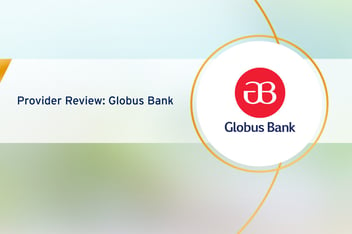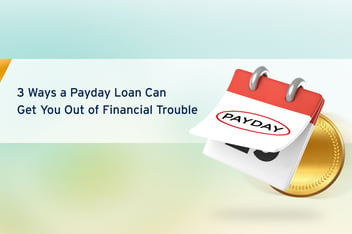
What is a Personal Savings Plan?
If one of your goals for 2024 is to achieve financial security, then a personal savings plan is your roadmap to achieving that goal.
A personal savings plan is a structured approach to saving money over time to achieve specific financial goals or objectives.
A defined plan helps you identify your savings goals, prioritise them, and track your progress.
It involves setting aside a portion of your income on a regular basis and directing those savings towards various short-term or long-term financial objectives.
In addition to building financial security and achieving your goals, a personal savings plan helps prepare for emergencies.
Steps to Create a Foolproof Personal Savings Plan
Creating a foolproof personal savings plan involves several key steps to help you set clear goals, develop a realistic savings strategy, and stay committed to your financial objectives.
Here’s a step-by-step guide to creating a personal savings plan:
1. Set Clear Financial Goals
Identify your short-term, medium-term, and long-term financial goals. Make sure your goals are SMART (Specific, Measurable, Achievable, Relevant, Time-bound).
Break down larger goals into smaller, actionable steps with realistic deadlines.
2. Assess Your Current Financial Situation
Evaluate your current income, expenses, assets, and liabilities. Determine how much you can realistically afford to save each month after covering essential expenses. Also consider debt payments, and other financial obligations.
3. Calculate Savings Targets
Determine how much money you need to save each month to reach your financial goals within your desired timeframe. Use online calculators or create a spreadsheet to estimate the amount you need to save based on your goals.
4. Create a Budget
Develop a realistic budget that outlines your income, expenses, and savings goals. Allocate a portion of your income towards savings each month. Ensure that you’re setting aside enough money to achieve your financial objectives.
5. Choose Savings Vehicles
Consider options such as savings accounts, certificates of deposit (CDs), money market accounts, individual retirement accounts (IRAs), or brokerage accounts.
nairaCompare has a rich pool of savings accounts you can choose from.
6. Automate Your Savings
Set up automatic transfers or contributions from your checking account to your savings accounts. Automating your savings can help you stay disciplined and consistent with your savings plan, ensuring that you’re regularly setting aside money towards your goals.
7. Track Your Progress
Monitor your progress towards your savings goals regularly. Review your budget, savings accounts, and financial goals periodically to ensure you’re on track to achieve your objectives.
8. Review and Adjust as Needed
Review your savings plan regularly and make adjustments as needed, based on changes in your income, expenses, or financial goals.
Be flexible and adaptable, and be willing to modify your plan to accommodate unforeseen circumstances or changes in priorities.
By following these steps and staying committed to your personal savings plan, you can build a strong financial foundation, achieve your financial goals, and work towards a secure and prosperous future.
Supercharging Your Personal Savings Plan for Financial Freedom
Supercharging your personal savings plan for financial freedom involves maximising your savings potential, optimising your investments, and taking proactive steps to achieve your financial goals efficiently.
Here’s the ultimate guide to help you supercharge your personal savings plan:
● Maximise Your Income
Look for opportunities to increase your income. This could be negotiating a raise, taking on additional work or freelance projects, or exploring passive income streams like rental properties or investments.
● Reduce Expenses
Review your expenses and identify areas where you can cut back or reduce spending. Consider adopting frugal habits, shopping smartly, and eliminating unnecessary expenses to free up more money for savings.
● Build an Emergency Fund
Establish an emergency fund with enough savings to cover three to six months’ worth of living expenses. Start small and gradually increase your savings until you reach your target emergency fund amount.
● Invest Wisely
Explore investment options that align with your risk tolerance, time horizon, and financial goals.
Consider diversifying your investments across different asset classes, such as stocks, bonds, real estate, and mutual funds. By doing this, you can minimize risk and maximize returns.
● Stay Motivated
Focus on your financial goals by tracking your progress, celebrating milestones, and visualising the benefits of achieving financial freedom. Surround yourself with supportive friends, family, or mentors who can encourage and inspire you along the way.
By following these steps and staying committed to your personal savings plan, you can supercharge your savings and move closer to achieving financial freedom and security.
Why Having an Emergency Fund is Essential in Your Savings Plan
Having an emergency fund is a fundamental aspect of financial planning and an essential component of your savings plan.
Here are some reasons why an emergency fund is essential in your savings plan:
● Financial Security
An emergency fund provides a financial safety net to cover unexpected expenses or emergencies, such as medical bills, car repairs, home maintenance, or job loss. Having a cash reserve can help you avoid financial hardship and prevent you from going into debt to cover unforeseen costs.
● Peace of Mind
Knowing that you have a cushion of savings to fall back on in times of need can provide peace of mind and reduce stress. Instead of worrying about how you’ll cover unexpected expenses, you can focus on finding solutions and managing the situation effectively.
● Avoiding Debt
Emergency funds can help you avoid resorting to high-interest payday loans or other forms of debt to cover unexpected expenses.
By using cash reserves from your emergency fund, you can avoid accumulating debt and the associated interest charges and fees.
● Maintaining Financial Independence
Having an emergency fund can help you maintain financial independence and autonomy. You don’t have to rely on others for financial assistance or support during challenging times, allowing you to preserve your dignity and self-reliance.
● Protecting Long-Term Goals
An emergency fund can protect your progress towards long-term financial goals, such as saving for retirement, buying a home, or funding education expenses. Without an emergency fund, unexpected expenses or emergencies can derail your plans and set you back financially.
● Funding Opportunities
Having cash reserves available in your emergency fund can also provide opportunities for investment or taking advantage of favourable financial opportunities.
● Cushioning Against Income Loss
An emergency fund can provide a buffer against temporary income loss, such as job loss or reduced hours. Having savings to cover essential expenses can help you bridge the gap until you’re able to secure alternative income sources or find a new job.
By prioritising your emergency fund in your savings plan, you can achieve greater financial stability and resilience to navigate life’s unexpected challenges.
Personal Savings In Entrepreneurship
Personal savings are an important source of startup financing for many entrepreneurs who are just starting out.
Using personal savings to finance a startup can be a great way to jumpstart the business and get it off the ground without relying on outside investors or lenders.
Personal savings play a crucial role in entrepreneurship, especially in the early stages of starting a business.
Here’s how personal savings can impact entrepreneurship:
● Seed Capital
Personal savings often serve as the primary source of seed capital for entrepreneurs. Using personal funds to finance startup costs, such as business registration fees, initial inventory purchases, or equipment expenses, allows entrepreneurs to launch their businesses without relying on external financing.
● Risk-Taking
Entrepreneurs who invest their savings into their businesses demonstrate confidence in their ventures and are more willing to take calculated risks.
Personal savings allow entrepreneurs to experiment, pivot, and adapt their business models as needed without external pressure from investors or lenders.
● Control and Autonomy
By using personal savings to finance their businesses, entrepreneurs can retain full control and autonomy over their ventures.
They don’t have to answer to investors or lenders and can make decisions based on their own vision, values, and goals.
● Bootstrap Funding
Bootstrapping, or self-funding, is a common strategy among entrepreneurs who rely on personal savings to cover startup costs and operating expenses. Bootstrapping allows entrepreneurs to operate leanly, minimise overhead costs, and focus on generating revenue without taking on debt or giving up equity.
● Proof of Commitment
Using personal savings to fund a business demonstrates a strong commitment to its success. Investors, partners, and stakeholders may view personal investment as a positive signal of the entrepreneur’s dedication and determination to make the business succeed.
● Financial Stability
Personal savings provide a financial safety net for entrepreneurs, especially during periods of uncertainty or financial challenges. Having savings to fall back on can help entrepreneurs weather downturns, cover unexpected expenses, and sustain their businesses during difficult times.
● Sustainability
Building a business with personal savings encourages financial discipline and responsible spending habits. Entrepreneurs are more likely to prioritize cost-effective strategies, focus on revenue generation, and seek sustainable growth opportunities to ensure the long-term success and viability of their businesses.
While personal savings can be a valuable resource for entrepreneurship, it’s essential for entrepreneurs to carefully consider the risks and trade-offs associated with using their own funds.
If you are ready to take your financial security to the next level, you can take advantage of nairaCompare’s range of personal savings accounts.




